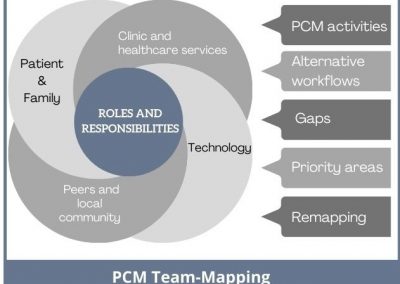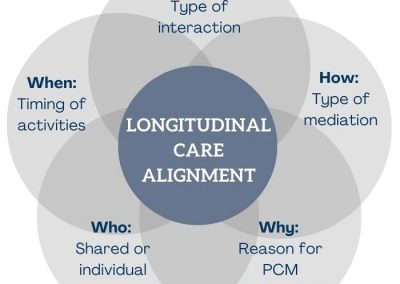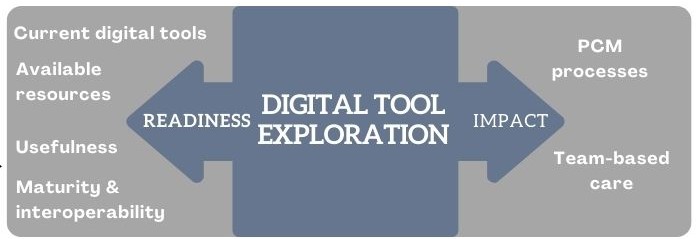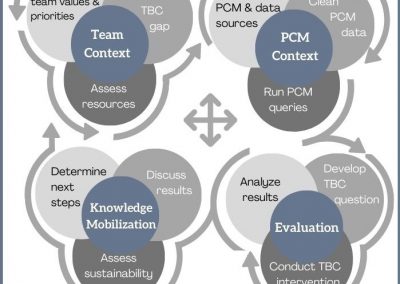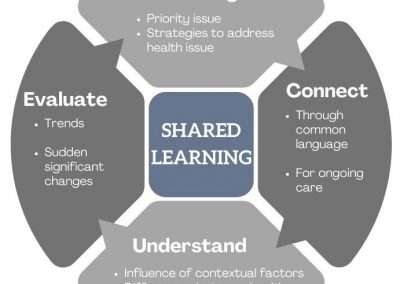Introduction of Five Methods for Patient-centred Measurements
We created five methods for the collection and sharing of patient-centred measurement (PCM) in team-based care. The first three methods focused on how to integrate PCM into a care team. The last two methods focus on the promise of PCM in representing the values and preferences of patients in the delivery of quality care. Below is an overview of each of each of these methods, and scenarios and videos to further demonstrate how these methods can be applied. More detailed explanation of each method can be found in our upcoming publication:
Antonio, M.G., Davis, S., Smith, M. Burgener, P., Price, M., Lavallee, D., Fletcher, S., & Lau, F., (2022). Advancing digital patient-centered measurement methods for team-based care. SAGE Digital Health. https://doi.org/10.1177/20552076221145420
Method 1: Patient-centred Measurement Team Mapping
Overview
The first PCM method is focused on understanding the roles of responsibilities of different care team members. Techniques such as team-mapping, interviews and focus groups can be particularly useful when new care team members, tools or measurements are introduced.
Method 2: Longitudinal Care Alignment
Overview
Method 2 is focused on exploring the ‘where’, ‘how’, ‘who’, ‘why’ and ‘when’ measurements are being collected and shared. It expands from PCM method 1 in understanding how PCMs can be used across time.
Method 3: Digital Tool Exploration
Overview
Method 3 is explores how digital tools impact the collection and sharing of PCM, It considers how digital tools for PCM can used in the collection and sharing o these measurements, and a team’s readiness for the integration of these tools.
Video
Watch the section of our BC SUPPORT Unit webinar where we presented on the Digital Tool Exploration Method.
Method 4: Team-based Quality Improvement
Overview
Method 4 is adapted from the Plan-Do-Study-Act framework in exploring how PCM can be used for quality improvement with care team members. The four iterative stages involve considering the team context, PCM context and developing strategies for evaluation and ongoing knowledge mobilization.
Method 5: Shared Learning
Overview
Method 5 promotes patient-provider interactions in learning from each other. It involves the four actions of using PCM for ongoing connections, evaluating when significant changes, understanding why these changes may be happening, and identifying priority issues and strategies that align with patient’s goals and context.

